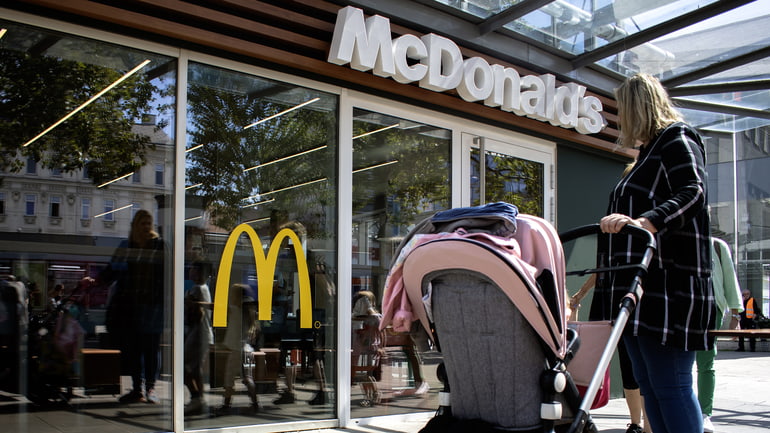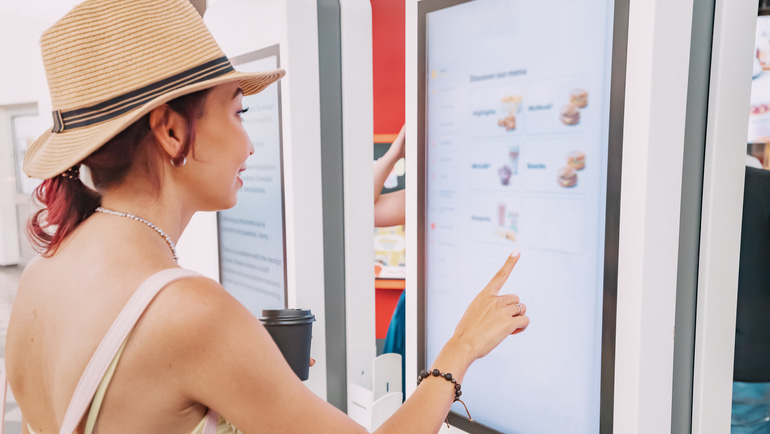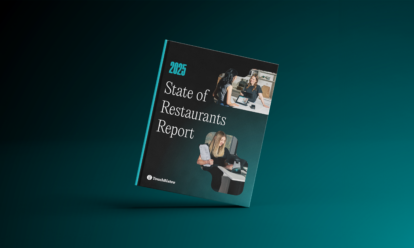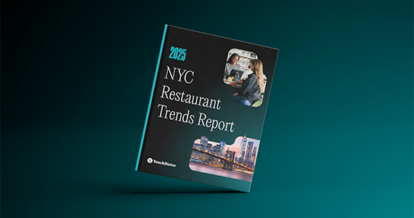Choosing a restaurant model for your venue can be a difficult choice. This is because, as a restaurateur, there are many ways to operate your restaurant, depending on what you have to offer and your overall goals. One restaurant model may bring one restaurateur great success, but it may not for another. With all these factors in mind, one of the restaurant models you may want to consider is a counter service restaurant.
Think that a counter service restaurant might work for your venue? Now’s the time to find out!
To help you figure out the best service model for your restaurant, this guide will walk through the following:
- The definition of what a counter service restaurant is
- Difference between counter service vs table service
- Examples of counter service restaurants
- Benefits and drawbacks of counter service
What Is a Counter Service Restaurant?
A restaurant that offers counter service is defined as a type of quick service restaurant, otherwise known as QSR, where guests must walk up to the counter, order, and pay for their meal before receiving it. When the order is ready, guests will proceed to the counter to pick it up.
Some common examples of a counter service restaurant are fast food chain restaurants, coffee shops, and cafeterias.
Counter Service vs Table Service
So, what is counter service and how does it differ from other types of service? As noted above, counter service is when guests take on a more active role in the dining experience, as they place their order at the counter and pay, wait for their order, and take it away when it’s ready themselves (as opposed to having a server carry out these tasks for them).
On the other hand, table service is the type of service you receive at a full service restaurant. When guests arrive, they are seated with menus and wait for a server to come take their order. Their drinks are first brought to the table, and then their food shortly after. The server checks on the table every so often, ensuring that they’re having a pleasant guest experience. A check then comes to the table once the guests are finished eating and ready to leave. In short, it’s a much more hands-on experience than counter service, which is more of a self-service model.
Because the counter service model demands that the customer take a more active role, it’s important to make sure you’re in compliance with the Americans with Disabilities Act (ADA) to ensure your restaurant is accessible to all customers in terms of entry, mobility, and access to your goods and services. To ensure you have an ADA compliant service counter, the food-ordering counter should be no more than 36 inches high, or there must be a place to pass over food to customers who may have difficulty reaching over. Another way to ensure your restaurant has an ADA compliant service counter is to ensure the tables must be between 28 – 34 inches tall. The more accessible your restaurant is, the more guests you can serve, and the higher the chances you’ll have returning customers as well.

What Are Some Examples of Counter Service Restaurants?
Counter service restaurants are everywhere and essential to the global restaurant food scene. Here are some popular examples of counter service restaurants:
- Starbucks is known internationally as a coffee shop chain that provides counter service to “millions of customers every day in more than 80 markets,” according to its website.
- McDonald’s is a fast food chain known to many due to its quick counter service and golden arches.
- KFC is a global chain that has served fried chicken via its speedy counter service to guests for over 75 years.
- Subway operates as a quick service restaurant that provides counter service to every one of its customers.
- Shake Shack started in NYC and offers quick counter service with a set menu option that can be modified by guests.
- In-N-Out Burger provides quick counter service to guests and is known for delivering “quality you can taste.”
Although this is only a small snapshot of the endless number of restaurants that offer counter service for its guests, this list offers a snapshot of what a counter service restaurant is and how it operates.
Benefits of Counter Service
Now that we have answered the question “what is counter service?” and covered some of the most popular examples, let’s talk about three of the biggest benefits of running a counter service restaurant.
1. Lower Labor Costs
As a restaurant owner, when someone mentions how to lower your operational costs, you’re likely going to be all ears. Well, with a counter service restaurant, one of the main benefits is that it comes with lower labor costs. This is because fewer staff are needed to operate a counter service restaurant, as no one needs to oversee the guests on the floor, take orders at the table, run dishes, or carry out any other form of in-venue service.

In fact, you can decrease your labor costs and number of staff needed by leveraging restaurant technology in a counter service restaurant. A perfect example of this is a self ordering kiosk, which is generally implemented in the front of house at QSRs. Self ordering kiosks have become a staple in venues that offer counter service, such as the fast food chain McDonald’s. Guests can go ahead, place, order, and pay for their meal on their own, so you need fewer staff and save on labor costs – talk about a win-win situation.
2. Faster Service
There are times when guests are looking for a quick and convenient meal, so they can eat and get on with their day. Counter service provides a faster service to those who may only be looking to stop by your restaurant for a quick bite or drink to go. Guests can simply walk up to the counter or self ordering kiosk, place their order, and then receive it shortly after, with minimal interaction with staff. Ultimately, making counter service a convenient solution for guests looking for faster service than they would get at a full service restaurant.
Speaking of convenience, other QSR technology – beyond self-serve kiosks – can also play a role in speeding up service at counter service venues. For instance, mobile POS systems allow staff to bust lines quickly and send orders to the kitchen instantly, so they can be prepared faster.
3. More Upselling Opportunities
Restaurants that offer counter service also have the opportunity to increase sales thanks to easy upselling opportunities. An example of this is asking a guest if they want to upgrade their meal to a combo. At a counter service restaurant, guests would typically be more inclined to do so and make other impulse decisions due to feeling like they’re in a time crunch. This is different from when guests are dining at a table service restaurant and they have more time to think through their decision. It becomes a win-win for both you and the guest!
Counter service also leaves more room to display signage or digital displays at the counter, which can further encourage guests to upgrade their meal.
Drawbacks of Counter Service
Yes, a counter service restaurant is a viable restaurant service model that can be highly successful. However, there are some drawbacks to consider if you choose to operate a counter service restaurant instead of providing table service.
1. Less Personal Dining Experience
One of the major drawbacks about operating a counter service restaurant is the lack of ability to provide a personalized dining experience for guests due to fewer interactions with staff. At a counter service or limited service restaurant, staff lack the opportunity to create a personal connection with each guest that walks through its door, as the goals of a quick service restaurant are different (i.e. speed and efficiency over hands-on service). This means your staff have less time to leave a positive and lasting impression on i’s guests, which can be challenging.
2. Limited Menu Options
With a counter service restaurant, the menu is kept simple for ease of execution. If the menu is too complex, it makes it difficult for back of house staff to push out orders as quickly as they need to. If you plan on having a complex menu with a wide variety of ingredients and recipes that take more time to prepare, this is something to keep in mind.
3. Smaller Check Sizes
When guests dine at a full service restaurant, the menu items tend to be more expensive, and tips need to be added on top of the check. Another factor to consider is that alcohol is typically served at a full service restaurant, which also adds to the check size. The opposite is true with a counter service restaurant, as the menu items are generally cheaper, no tip is required, and alcohol is not typically served. Therefore, the check sizes are typically smaller with counter service restaurants.
We’ve now answered the question, “what is a counter service restaurant?” and explained the top benefits and drawbacks of operating a counter service restaurant. You are now better equipped to decide whether a counter service model is right for you and your restaurant.
Download our free inventory template
Sign up for our free weekly TouchBistro Newsletter







